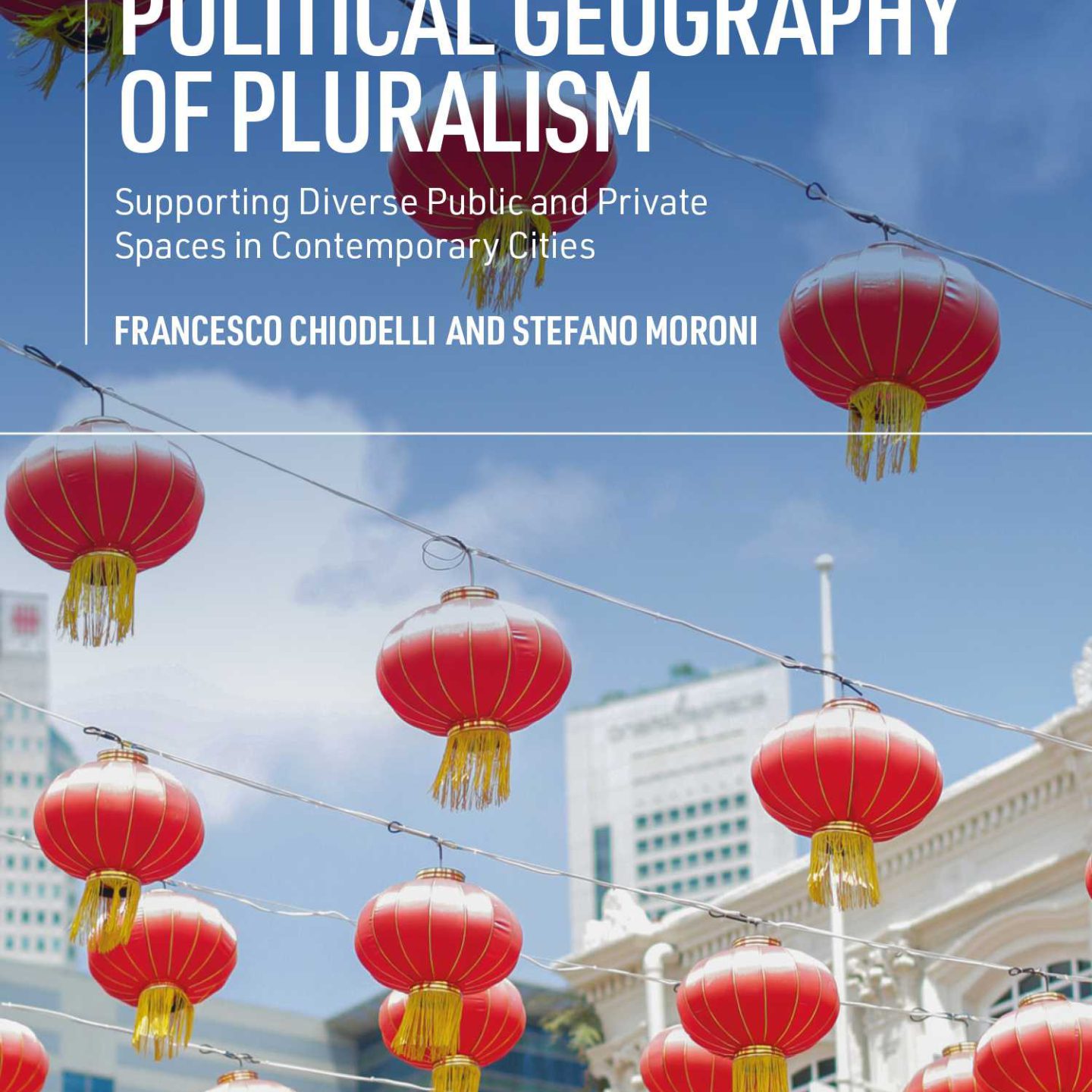DESCRIPTION
Pluralism – and the connected questions of toleration – is today a crucial theoretical and practical problem in need of critical discussion. Differently from what is usually done, such discussion must take urban space into serious consideration, not only because many of the issues of pluralism that we deal with daily are most forcefully manifest in cities, but also because the articulation of space has a close connection with the conflicts generated by diversity. Against this background, the book analyses the complex relation between pluralism (understood as the coexistence of many diverse conceptions of the good) and different types of public and private space (e.g. streets, parks, public squares, restaurants, shopping malls, homeowners associations), with a specific focus on the rules that govern such spaces. Accordingly, it deals with toleration as a matter of public ethics: that is, how and why the state should act in relation to particular problems. Indeed, the purpose of the book is to identify the limits within which acceptable public measures to spatially regulate diversity may lie. It does so by adopting a framework in which pluralism is seen as a pivotal value of contemporary democracies that must be protected and supported.
TABLE OF CONTENTS
1 The Rules and Spaces of Diversity
2 The Structural Diversity of Public and Private Spaces
3 The Geography of Pluralism in Public Spaces
4 The Geography of Pluralism in Private Spaces
5 Pluralism, Urban Space and the Public Sphere
6 Urban Planning and the Pluralistic city
7 Conclusions: Spatial Spheres of Toleration
CHAPTER ABSTRACTS
Chapter 1 The Rules and Spaces of Diversity
Chapter 1 introduces the relationship between urban space and diversity, arguing that the assemblage of proprietary, locational, perceptive-mental, and physical features of a space is a key element to consider when dealing with the coexistence of diverse and conflicting preferences, beliefs, and lifestyles. While diversity has always been a typical feature of urban life, its contemporary scope and range of meanings have broadened (as exemplified by the impact of recent migration flows on Western countries). This has caused conflicts that are also linked to the structural complexity of regulating diversity – in particular, when it intersects with the heterogeneity of urban space. It is against this background that the main aims and assumptions of the book are stressed in this chapter. The book intends to provide some coordinates for the spatial regulation of diversity, resting on the idea that defending and encouraging the peaceful coexistence of many diverse conceptions of the good (i.e., promoting pluralism) must be recognized as a fundamental value of democracies.
Chapter 2 The Structural Diversity of Public and Private Spaces
Chapter 2 addresses the complex articulation of urban space, whose proprietary arrangements are crucial for the (spatial) analysis of pluralism. An interpretation of the concept of property based on the public-private dyad is oversimplistic and hence analytically unsatisfactory for understanding the complexity of contemporary urban spaces and of many issues of pluralism. Consequently, a basic typology of space consisting of six categories or tenure regimes is proposed in this chapter. Thereafter in the book, these six categories are used as analytical devices with which to show how a legal geography of pluralism derives from this typology of space. The categories are created by combining the different access and behaviour-related restrictions on the use of space with the ownership model (i.e. private property and public property), as well as the ways in which a space can be possessed (e.g. individually, through a collective entity, or via a public body). Three of these categories entail private ownership (they are: simple private spaces, complex private spaces, and privately-owned collective spaces), while three involve public ownership (they are: stricto sensu public spaces, specialized public spaces, and privately-run public spaces).
Chapter 3 The Geography of Pluralism in Public Spaces
Chapter 3 focuses on problems of pluralism in public space. Its reasoning rests on two related tenets. The first is that public space has an “intimate nature” as the place where diversity in its various forms is expressed to the fullest extent. The second is that public regulation must be indifferent to various conceptions of the good and must consequently aim at maximizing the degree of diversity in public space; thus, it must focus only on negative effects on third parties, so that peaceful coexistence and interaction among people with different histories, cultures, and identities is made possible. Starting from these premises, the chapter analyses some widespread practices of public space regulation in Western cities: namely, municipal ordinances dealing with issues of order, decorum, and safety. Taking the case of Italy as a frame of reference, the chapter argues that these ordinances quite frequently, but unacceptably, criminalize the status of people in a “no-property situation” (e.g. the homeless and Roma people). More generally, these ordinances are discriminatory and intolerant because they favour, explicitly or implicitly, a substantive conception of the good. They do so in the unacceptable belief that certain lifestyles and preferences are better than others and must therefore also be promoted through spatial regulation.
Chapter 4 The Geography of Pluralism in Private Spaces
Chapter 4 considers the issue of pluralism in private spaces. Firstly, the case of homeowners associations (HOAs) is examined. It is argued that the answer to problems of regulating pluralism in this case should be sought in the light of two basic principles: the first is equality of public treatment between different types of HOAs (e.g., cohousing and gated communities); the second is that of limiting public restrictions on the regulatory prerogatives of HOAs, in the belief that public regulation must seek to be indifferent to individual and collective conceptions of the good as long as they do not cause direct and tangible harm to others. The second part of the chapter focuses on shopping malls, where some problems of pluralism may emerge in connection with the restriction of certain behaviours, such as holding political demonstrations. After presenting various interpretations of this question, the chapter argues that certain restrictions on behaviour, although unpalatable to many of us, should be regarded as legitimate in malls. They are in accord with the idea that the pluralist city can be seen as a mosaic of complementary spaces in which functions that are not admitted in one tenure regime are fully enfranchised in another.
Chapter 5 Pluralism, Urban Space and the Public Sphere
Chapter 5 considers the political geography of public space. Although several authors see the political importance of public space as lying in its necessary connection to the public sphere, it is argued that this idea is not entirely convincing. Not only can the public sphere develop even in intangible places (e.g. the Web), but it also has a crucial relationship with private space (e.g. private clubs, bars, homes, headquarters of NGOs). This observation provides an opportunity to argue two theses. The first is that there is no automatic link between modes of ownership and toleration. Consequently, public ownership of space is not always the best way to support toleration, just as private property rights are not always toleration’s worst enemy. The second is that the importance of public space is not limited to its narrow and immediate political dimension (e.g., organizing a demonstration), but also springs from its functional value (e.g. in terms of livability). This has important ethical and political implications, since many trivial and functional activities are linked in complex ways to the sphere of conceptions of the good, preferences, and identities.
Chapter 6 Urban Planning and the Pluralistic city
Chapter 6 examines the relationship between urban planning and pluralism. Urban planning can play an important role in the construction of a pluralist city, since it is concerned with determining what functions can be located in a given area – including functions, such as places of worship, which are crucial for the expression of fundamental needs, interests, or preferences. A substantial body of scholarly literature points to discretion and flexibility in planning as the best means with which to promote pluralism. The idea is that the undifferentiated treatment of different groups instead perpetuates dominant values and preferences. Although this argument has some persuasiveness, the chapter argues that in contexts where the values of diversity and multiculturalism are not fully accepted, such a planning approach can paradoxically create room for further discrimination against minorities. To support our view, the urban planning approach to the construction of mosques in Italy is examined. Against this background, the chapter proposes a radical modification of the planning system which is based on the principle of applying more general and abstract planning rules that regulate only the negative externalities of uses. In this way, opportunities for ethno-religious discrimination in terms of places of faith location and construction could be eliminated from the outset.
Chapter 7 Conclusions: Spatial Spheres of Toleration
Chapter 7 presents the conclusions of the book. It highlights that many regulatory problems related to diversity in cities are usually addressed by reference to two main conceptions of toleration: toleration-as-neutrality and toleration-as-recognition. Each conception provides different responses to practical problems that arise in the spatial regulation of diversity. However, both of them, when mobilised to analyse the legal and political geography of pluralism, reveal some shortcomings. Against this background, the chapter proposes a revised version of the neutralist approach, namely “variegated inclusive neutralism”. After identifying the characteristics of this approach, the chapter explains that it entails a conception of cities as made up of “spatial spheres of toleration” anchored primarily to different tenure regimes. Each sphere is legitimately characterised by different prerogatives of exclusion – and, thus, by a different degree of toleration. From this perspective, cities can be regarded (not only descriptively, but also from a normative standpoint, that is, with a focus on public policies and rules) as mosaics of complementary spheres; their pluralistic character is not so much the sum of each individual sphere’s degree of pluralism as it is, above all, the result of the harmonious relationship among them within an appropriate ethical and political framework.

